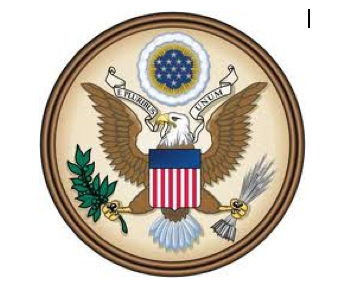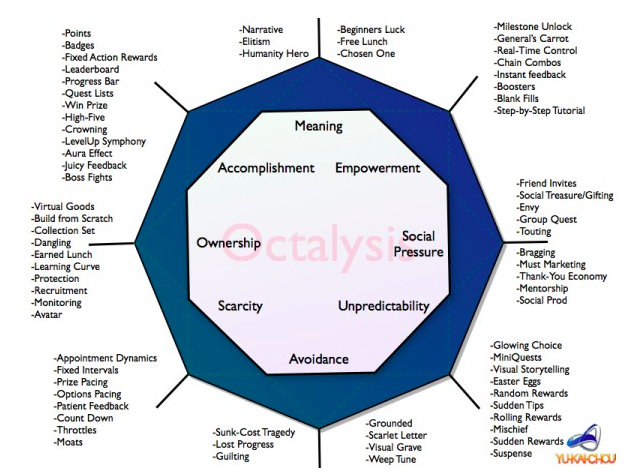
By Chris Liang-Vergara, FirstLine Schools
Imagine you’re a K-12 student going through the daily grind; probably not the most motivated one in the room, and your math teacher has the following letter projected on the screen as you enter the room:
To my fellow Americans,
The United States of America is no longer the world leader in the field of mathematics. According to a test taken by students around the world, we ranked 25th, and countries such as China, Singapore, Japan, Finland, Korea, Germany, and Canada scored significantly better than us. This is a wake-up call for the nation.
We will not sit and watch other countries pass us by. I am calling on all of our scholars to realize that the future of our country depends on their focus, energy, and determination. We cannot do it for you. Lend a hand to your struggling peers and look within yourself because working together is the only way we will return to greatness.
I have selected some of nation's most promising schools to lead this effort. It is my hope that their outstanding work towards math mastery will serve as an example for schools across the country and inspire a united effort to make the United States of America #1 in math in the world.
Hard work is what built this country, and it is what's required to once again make us a leader in this field. Together, we can accomplish this goal.
Sincerely,
The President
How are you feeling now? Interest perked? Welcome to the USA ST Math Campaign. :)
During the 2012-13 school year at FirstLine Schools, we implemented this narrative during the spring semester and saw six weeks of sustained, record progress by our students in ST Math that led right into our state testing. Students were literally accomplishing double to triple the amount of progress compared to previous weeks. But it’s not just a matter of drafting a dramatic letter to make students approach their work with tenacity; that would only result in possibly a few days of increased activity. This narrative was designed around fundamental principles of motivation and leading theories in the field of gamification. In short, we wanted to create the next epic, blockbuster game, not an easy, short-term win with a new version of space invaders.
As a teacher of eight years, I always knew that embedding the “why” in your classroom activities was the critical aspect of any unit design. Why should our students care about doing something well if there’s no higher purpose behind it? In the realm of blended learning, it can become a greater challenge since students will interact with the same digital content provider on a repetitive basis, and it can feel tangential to reality if you’re not careful. Creating an authentic sense of urgency and purpose each day is the real challenge. Game designers have people around the world playing their content for months on end, so why not ask them?
If you’re new to gamification, I’d recommend starting with the following 3 resources:
The important thing to realize is that we are not programmers, but we are teachers. We have the ability to transform our classrooms in anything we want and take our students through memorable experiences if we craft them right. We didn’t lie to our kids and tell them this was a real letter from the President of the United States of America; they’re smarter than that. Learners, whether they’re in kindergarten or even college, enjoy a good story especially if they are a living part of it. We leveraged that innate drive and combined it with frameworks from gamification to create this epic narrative to drive the motivation of our learners.
The graphic below shows the Octalysis Gamification Framework by Yu-kai Chou that was the core structure behind our USA ST Math Campaign. It shows eight human drives that can be applied to motivate a player. Special thanks to Yu-Kai for his time and advice during our design process.
Here’s another copy of the letter from the president with notes on how Octalysis was applied.
To my fellow Americans,
The United States of America is no longer the world leader in the field of mathematics. According to a test taken by students around the world, we ranked 25th, and countries such as China, Singapore, Japan, Finland, Korea, Germany, and Canada scored significantly better than us. This is a wake-up call for the nation.
Social Influence incorporates competition and the drive we have to draw closer to events we can relate to. We made it clear it applied to us (Americans) and showed them the competition (other countries by name).
We will not sit and watch other countries pass us by. I am calling on all of our scholars to realize that the future of our country depends on their focus, energy, and determination.
Curiousity & Unpredictability harnesses the desire to see what’s next if there is a chance of a positive outcome. We emphasized repeatedly that hope was not lost; that we could change things positively if we acted now.
We cannot do it for you.
Loss & Avoidance also plays into this section. Students wanted to avoid being the ones that let the country down or failed to step up and put in the effort.
Lend a hand to your struggling peers and look within yourself because working together is the only way we will return to greatness.
Expression of Creativity had a role in this call for collaboration. Systems of peer tutors were setup so that students that proved themselves through performance and maturity could help their peers in creative ways. Tutors were given special feedback loops to see how well they were helping the students there were assigned.
I have selected some of nation's most promising schools to lead this effort.
Epic Meaning & Calling is the core drive where a player believes he/she is doing something greater than himself/herself and was “chosen” to play. This is the most important part. Every hit game emphasizes to the player over and over that he/she is the chosen one, the top rookie, the player with the most potential. Intertwine that with an epic like saving the world or your country, and you’ll have your students hooked.
It is my hope that their outstanding work towards math mastery will serve as an example for schools across the country and inspire a united effort to make the United States of America #1 in math in the world.
Accomplishment and a sense of development along the journey is necessary for sustained motivation. Just like your avatar grows or your points increase, we had different systems for daily and weekly feedback to students on their growth, and teachers would share students’ pre and post-assessments privately to show them how much they’ve learned.
Hard work is what built this country, and it is what's required to once again make us a leader in this field. Together, we can accomplish this goal.
Social Influence also reflects the drive of companionship. For all our leaderboards and acknowledgements, we always used the language of “Top Contributor” to reinforce that all the schools and students involved were doing this together for a common goal. That way classes or students that were significantly behind would not lose interest because they could still contribute something to this “national” cause. It wasn’t all about winning. It was about a higher cause.
Sincerely,
The President
To reinforce the epic nature of the narrative and also equip us with an epic voice for updates, “The President” became our sole narrator to the students (which is obviously superior to their teacher). Every update of progress, congratulations, or even frustration if students were slowing down came to them in the format of a letter from The President.
Scarcity was applied in the follow-up to the reveal of this letter, which gave the students a set, limited timeline to reach their goal. Student were encouraged to use ST Math after school, however during the school day they were limited to the 30 or 45 minutes in the lab. This also reinforced strong classroom culture since every minute the class was unable to login to ST Math was a missed opportunity to contribute.
Ownership is a drive built in to the design of ST Math because a student can excel as quickly as he/she shows mastery in the program. We constantly communicate this sense of ownership of learning during the first few weeks of school, and every year we have amazing stories of students that never showed much interest in math suddenly becoming deeply engaged due to this new level of control.
Besides this framework, we were thankfully able to take the story to the next level in the real world through collaboration with Aspire Public Schools, Highline Public Schools, STARR Detroit Academy, and Oakland Unified. This collaboration among educators enabled all of our students to experience a true sense of national collaboration and friendly competition with peers outside of their immediate environment. We even added a geographic visitor’s feed on the blog page so everyone could see how people from cities around the country were “watching” them.
Chris Liang-Vergara is the Director of Instructional Technology for Personalized Learning at FirstLine Schools, New Orleans, LA.

MIND Research Institute welcomes guest blogs that highlight best practices in math education, blended learning and innovative learning strategies that inspire students at all ages.
Comment